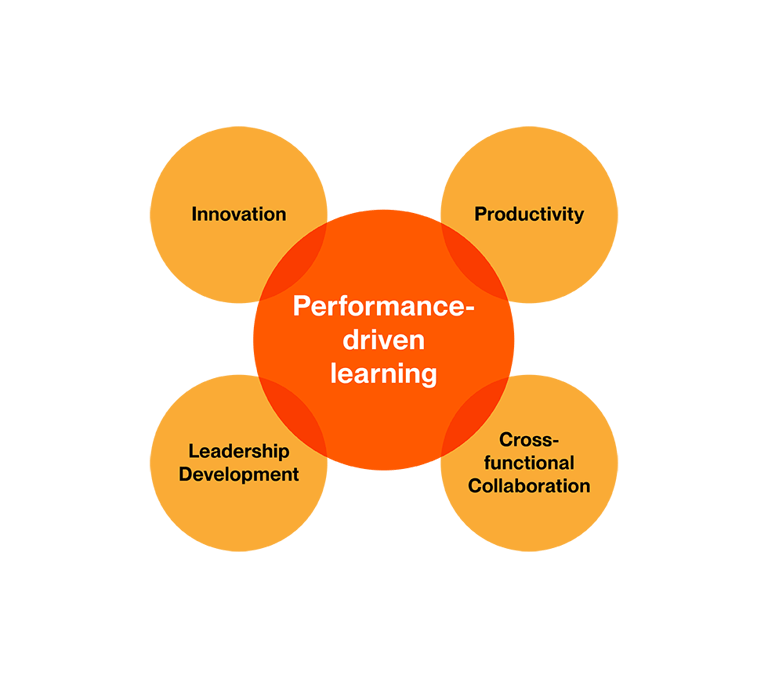7 Different Types of Learning to Consider When You Develop Your Learning Programs
Written by
Tigerhall Team
Posted on
Last modified on

“Everybody is a genius. But if you judge a fish by its ability to climb a tree, it will live its whole life believing it is stupid.” This time-hallowed quote by Albert Einstein seems to ring true more than ever at a time where training needs analysis has become the primary approach to aggregating common developmental needs and delivering a standardized learning and development (L&D) program. However, not every employee is the same. As Jeff Freyermuth, principal research analyst at Gartner, puts it aptly, “The traditional, one-size-fits-all approach to L&D will no longer cut it in the new work environment.” Indeed, expectations for training programs have evolved from all-encompassing content recommendations to highly targeted learning methods that are best adapted to helping the individual employee shine in his or her specific role in the company.
Here are the seven types of learning to consider when developing your L&D programs.
1. Performance-Driven Learning

In 2017, companies spent $90.6 billion on corporate training. Yet, only 37% of these companies thought that their training was effective. Performance-driven learning, as its name suggests, is focused on achieving outcomes that yield the biggest and most direct impact on your business results and outputs. It places an emphasis on the things that drive performance the most, which may include innovation, productivity, leadership development and cross-functional collaboration.
2. Tactical Learning

Have you ever read a crystal-clear instruction manual? Tactical learning resembles an instruction manual in the sense that it is a step-driven approach towards learning. It is very much focused on the how-tos and the steps needed to accomplish a task at work. Examples include written step-by-step guides on how to execute Search Engine Optimisation processes, as well as detailed video tutorials on how to create a content calendar for marketing purposes.
3. Tools Training
Did you know that digitally advanced small businesses realize significant benefits such as earning two times as much revenue per employee? Yet, 80% of small businesses are not taking full advantage of digital tools like digital analytics and more sophisticated online tools. A common reason for this is that employees lack the technical knowledge on how to utilize them.
Tools training can help your employees to learn how to master specific tools, be it Photoshop for your designers, or Facebook Advertising for your performance marketers. Such training focuses on a specific tool and teaches one how to press the right buttons (literally) in order to drive performance in certain areas. For external tools and third-party vendors who provide you with software tools, they are oftentimes very happy to provide this instructional tool-tip training for you for free. Examples include Google’s guide to Google Ads, and Facebook’s Ads Guide.
4. Behavioral Learning

Want to weed out bad habits in your employees? It’s easier said than done, say Jack Zenger and Joseph Folkman of leadership developmental consultancy Zenger/Folkman, “So often the effort produces an opposite result: rupturing the relationship, diminishing job performance, or causing the person to dig in their heels.” So now that direct intervention is out, what next? According to a study conducted by the duo, the most important method leaders should adopt if they want to drive change in their employees’ behavior is to inspire, but do not nag.
5. Compliance-Driven Training
According to a Brandon Hall study, 77% of organizations face an external compliance audit at least annually. But only 48% believe that they are fully prepared for a compliance audit. This is where compliance-driven training programs can come in to educate your employees on the policies, procedures and actions required to prevent both problems in the workplace and violations of the law. These policies and procedures are often job and industry-specific.
Compliance training is commonly seen in the financial services industry, where one needs to comply with regulatory requirements and legislation, such as anti-bribery and corruption laws. An example of an organization providing certification for anti money-laundering in the Asia Pacific region is the International Compliance Training Academy, who is experienced in sharing regulatory and financial crime compliance knowledge and best practice with companies.
6. Cultural Learning

According to a survey conducted by the Harvard Business Review, work culture varies widely across organizations in different countries. While organizations in Africa are characterized by learning and purpose, indicating an openness towards change through innovation, many firms in Eastern Europe and the Middle East are characterized by a strong degree of stability.
This is why cultural learning is not just about learning about the internal culture of your firm, but also learning about the different cultures in the different markets that you operate in. Cultural learning is especially relevant in emerging markets or countries with different developmental stages.
7. Holistic Learning
Do you care about your employees just as professionals, or also as people outside of work? Research has shown that both mental health and work performance inevitably go hand-in-hand. For example, improved wellbeing at work increases work productivity by as much as 12%.
Holistic learning is about taking into account all aspects of your employees’ life and recognizes that life is not just about work. After all, you can’t perform well at work if the rest of your life is not going well. It’s all about holistic development and becoming better people as a whole.

In conclusion, there's another quote from Albert Einstein that uncannily rings true even till today. It goes something like this, “Education is what remains after one has forgotten what one has learned in school.” Indeed, in a world where 70% of employees report that they lack the mastery of the skills needed to do their jobs, there is no doubting that L&D plays a vital role in getting employees’ skills and knowledge up to standard. Perhaps one of the biggest failures of formal education is its proclivity to assume every learner is cut from the same cookie-cutter mold; this is coincidentally the biggest pitfall that your L&D programs must strive to avoid at all costs.